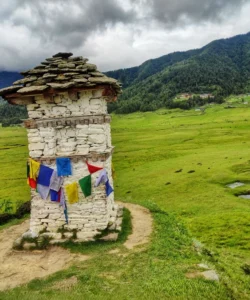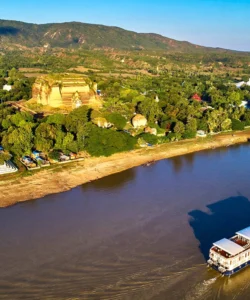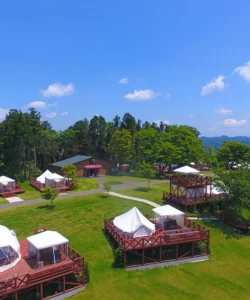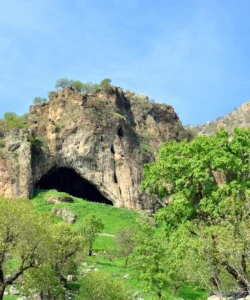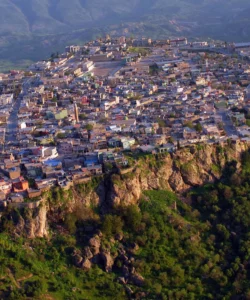Ahsan Manzil, often referred to as the “Pink Palace,” is a magnificent historical palace located on the banks of the Buriganga River in Old Dhaka, Bangladesh. Once the official residence of the Dhaka Nawab Family, it now stands as a museum that offers a rich glimpse into the opulent lifestyle and political influence of the Nawabs and the history of Dhaka.
Name
Ahsan Manzil Museum (Bengali: আহসান মঞ্জিল) is popularly known as the “Pink Palace Museum” due to its striking color.
Address
The museum is situated at Islampur Road, Old Dhaka, Dhaka, Bangladesh. Its picturesque location on the eastern bank of the Buriganga River provides a grand, waterfront setting.
How to Get There
Navigating to Ahsan Manzil is an adventure in itself, as it’s located in the bustling heart of Old Dhaka.
- By Air: The nearest airport is Hazrat Shahjalal International Airport (DAC). From there, you can take a taxi or a ride-sharing service to Old Dhaka.
- By Road (within Dhaka): The most common ways to reach the area are by rickshaw, auto-rickshaw (CNG), or ride-sharing apps (Uber, Pathao). These are best for navigating the narrow lanes of Old Dhaka. Local buses also serve the area.
- By Waterway: For a scenic approach, consider taking a boat from the Sadarghat Launch Terminal. This provides a historic view of the palace from the river, which was its original primary access point.
- By Foot: The palace is a key landmark and is easily accessible on foot from other historical sites and markets in Old Dhaka.
The museum is closed on Thursdays and public holidays. The ideal time to visit is during the cool, dry season from October to March.
Landscape and Architecture
Ahsan Manzil’s architecture is a stunning example of the Indo-Saracenic Revival style, beautifully integrated with its natural surroundings.
- Striking Pink Hue: The palace is famously painted in a vibrant pink color, which is its most recognizable feature and the source of its “Pink Palace” nickname.
- Riverfront Setting: It is magnificently positioned on the bank of the Buriganga River, with a broad flight of steps leading down to the water, designed for grand arrivals by boat.
- Architectural Fusion: The design is a blend of Mughal, European (Gothic and Renaissance), and traditional Bengali elements, characterized by its elegant domes, arches, and decorative motifs.
- Central Dome: A prominent and distinctive central dome crowns the palace, rising majestically over the two main wings and serving as a landmark visible from a distance.
- Two Sections: The palace is divided into the Andarmahal (Inner Palace), the residential wing for the family, and the Rangmahal (Outer Palace), used for official receptions and public functions.
- Interior Details: The palace’s interiors feature grand halls, banquet rooms, a Darbar Hall, and a ballroom, all decorated with intricate plasterwork, chandeliers, antique furniture, and portraits.
What Makes It Famous
Ahsan Manzil’s fame is tied to its historical and cultural significance as a symbol of power, wealth, and artistic taste.
- The “Pink Palace”: Its unique color and picturesque riverfront location make it a globally recognized landmark.
- Seat of the Dhaka Nawabs: It was the residence and administrative center of the influential Dhaka Nawab Family, who were instrumental in the development of the region during the British Raj.
- Architectural Masterpiece: It is celebrated as one of the finest examples of Indo-Saracenic Revival architecture in Bangladesh, representing a key period of architectural fusion.
- Pivotal Historical Events: The palace was a venue for significant political gatherings, including the meeting that led to the formation of the All-India Muslim League in 1906.
- Museum Conversion: Its successful transformation into a public museum has ensured its preservation and allows visitors to experience the history and culture of the Nawabi era firsthand.
Differences from Other Wonders (e.g., Lalbagh Fort)
While located in the same city, Ahsan Manzil and Lalbagh Fort represent different historical periods and functions.
- Primary Function: Ahsan Manzil was a residential palace for an aristocratic family, while Lalbagh Fort was a 17th-century Mughal military fort.
- Historical Era: Ahsan Manzil’s current form is from the late 19th-century British Raj era, showcasing the Indo-Saracenic Revival style. Lalbagh Fort is a monument from the earlier Mughal period, built in 1678.
- Architectural Style: The Pink Palace is defined by its pink color and fusion of styles, while Lalbagh Fort is a classic example of Mughal architecture with its distinct gates, tomb, and mosque.
- Narrative: Ahsan Manzil’s story includes a period of neglect and subsequent meticulous government restoration, highlighting a modern effort to preserve a cultural icon. Lalbagh Fort, while also a museum, has a history more focused on its initial construction and the political upheavals that left it unfinished.




